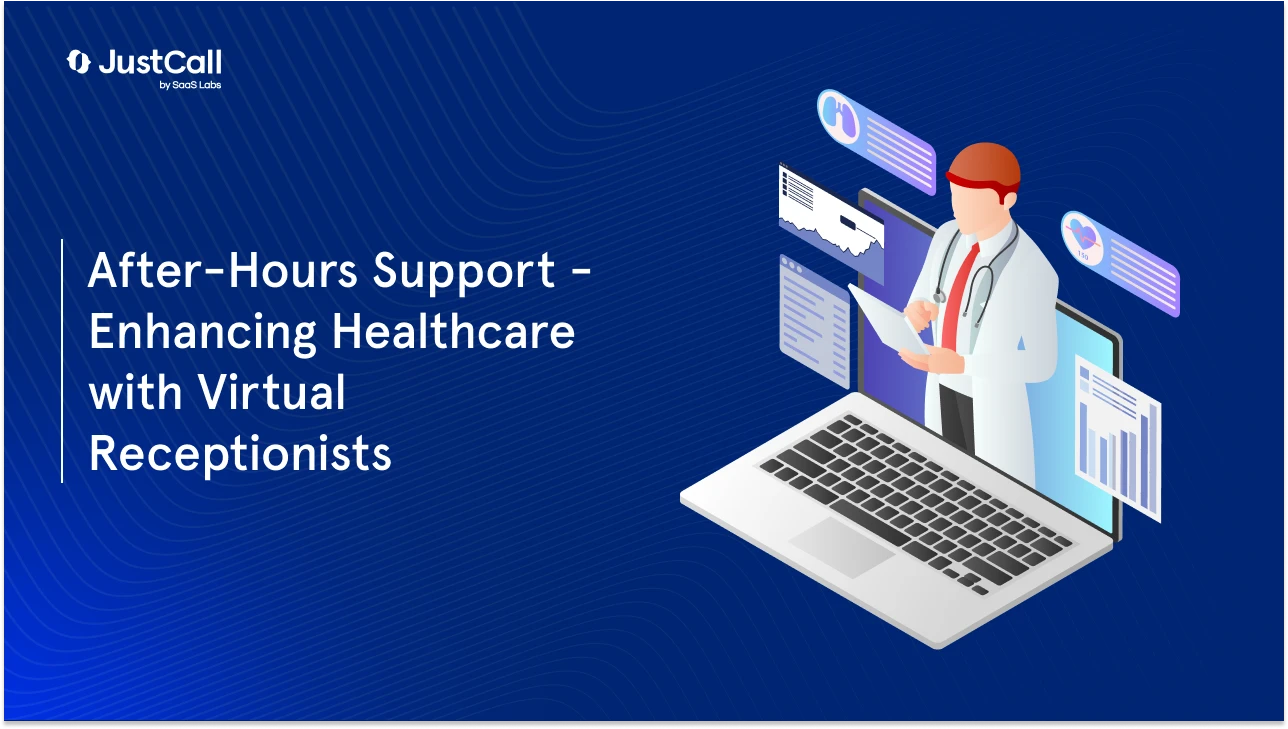Improving healthcare support is a priority for hospitals and healthcare institutions across the board. But the twist is that this ongoing process is increasingly becoming virtual. Unsurprisingly, data predicts that augmented reality and virtual reality in the healthcare market will reach USD 11.3 billion by 2030.
Increased digitization in healthcare only means that customers want instant, relevant, and convenient support, specifically for after-hours healthcare services.
In this guide, we will explore the challenges in healthcare provider support for after-hours services as well as how using a virtual receptionist can be the key to happier patients.
Pressing Communication Challenges in After-Hours Support for Healthcare
Convenient care and prompt service point toward meaningful patient interactions within the healthcare industry. However, it’s easier said than done.
Here are the top challenges in delivering a superior patience experience within the healthcare industry:
Challenge #1: Longer Wait Times
Customers, in general, hate to wait – be it on the phone, in a line, or for a doctor’s appointment. For 50% of customers, a wait time of 20+ minutes on virtual hold is ‘unacceptable:’
Extended wait times may make things worse for patients who may already be suffering physically. The added mental turmoil can significantly erode the overall patient experience and impact brand loyalty.
Challenge #2: Patients May Feel Uncomfortable
One of the primary challenges of after-hours healthcare services is the absence of physical healthcare professionals during out-of-office hours. This may be due to poor scheduling, limited budget, restrictive staff availability, and more.
This can negatively affect the patient experience and lead to:
- Delayed treatment and care and increased complications
- Exacerbated patient anxiety and stress can further lower the quality of care they receive
- Reduced patient trust and confidence in the healthcare system due to a lack of responsiveness and accessibility
Challenge #3: Inability to Access Important Information at the Right Time
Patients today want to be more involved in the care of their own health—around 40% of people want to be more involved in decisions about their care. Not providing them with the ability to reach out to the healthcare center at their own time and convenience can lead to a poor patient experience.
Plus, patients who feel disconnected from their healthcare providers may become disengaged and less motivated to manage their health proactively. This can further cause their health issues to worsen.
Finally, if patients feel that their healthcare providers are not supportive of their efforts to stay healthy, they may not adhere to the treatment plans.
Best AI Cloud Contact Center For Healthcare Services
The Big Solution for Quality After-Hours Healthcare Services
So, what’s the big solution to all these problems? Two words: Virtual Receptionist.
Virtual healthcare visits as a concept have already caught on, owing to COVID-19. Deloitte claims that, on average, 80% of consumers will continue with virtual visits, even post-COVID-19.
Additionally, 45.7% of consumers are actively engaging in digital and in-person healthcare-related activities:
Needless to say, using a virtual receptionist is not a far-off concept. Consumers are willing to go the virtual route, even for something as serious as healthcare.
Here’s how using a virtual receptionist can elevate the consumer’s experience:
| Applications of Using a Virtual Receptionist | Specific Healthcare Examples |
| 1. Appointment Scheduling and Reminders |
|
| 2. Patient Registration |
|
| 3. Prescription Refills |
|
| 4. Symptom Assessment |
|
| 5. FAQs |
|
| 6. Telehealth Support |
|
| 7. Billing and Payments |
|
| 8. Emergency Assistance |
|
| 9. Language Interpretation |
|
Most Important Features of a Virtual Receptionist
A virtual receptionist tool can make the experience of inbound callers at healthcare institutions and hospitals better, even during the after-hours.
Here are the most important features to look out for within a virtual receptionist tool:
- A multi-level IVR menu can help callers navigate the menu and route calls to appropriate agents.
- The ability to route inbound calls to idle live agents for immediate query resolution.
- The capability to route inbound calls to the voicemail box during after-hours and let customers hear pre-recorded personalized messages.
- Notifications for department-specific queries using the IVR menu so that agents can prepare for the call accordingly.
- Ability to add customized IVR greetings and a personalized welcome message.
- Call forwarding to other numbers, such as your mobile or external number.
- Access to IVR analytics for team performance, agent productivity, and data relating to after-hours calls, abandoned calls, and the average answer time.
All these virtual receptionist features come together to deliver a high-quality and scalable customer support experience for patients.
Bonus: Healthcare Communication Tips to Keep in Mind
1. Clear & Reassuring Language: Use a virtual receptionist tool that is able to:
- Communicate with empathy
- Provide clear instructions
- Acknowledge the patient’s concerns to build trust
2. Real-time Data Access: Ensure that the virtual receptionist has access to real-time patient data and Electronic Health Records (EHRs). This is the only way to offer accurate information and help consumers make informed decisions about their health.
3. Escalation Protocols: Perhaps the most important tip, think about how you will implement clear protocols for situations that the virtual receptionist cannot handle. Answer questions such as:
- How will the tool promptly escalate the query to a healthcare professional?
- Will it escalate to a nurse or on-call doctor?
4. Privacy and Data Security: As is the case with most technological tools, prioritizing data privacy and security is key. Even the virtual receptionist you leverage must adhere to strict privacy regulations such as HIPAA. Most importantly, the patients should be informed about how their data is being handled, used, and protected.
5. User-Friendly Technology: Ensure that the virtual receptionist interface is user-friendly and accessible. To make things easier for your less tech-savvy patients, you must offer resources, support, and guidance on how to communicate with the virtual receptionist.
Plus, they supplement their communication with additional yet synchronized channels (think chat, voice, video, etc.) to accommodate varying user preferences.
After-Hours Support for Healthcare is the Way Forward
Want to set the baseline for excellent care? Invest in a robust virtual receptionist tool like JustCall, which bridges the gap between patients and healthcare providers, even during after-hours.
Healthcare institutions benefit from saved time and a greater focus on patient care as the virtual receptionist works round the clock to handle routine tasks such as appointment scheduling, symptom assessment, prescription refills, etc.
Patients, on the other hand, benefit from the convenience and ease of accessing essential healthcare services at any time and at their fingertips — a win-win for all!












